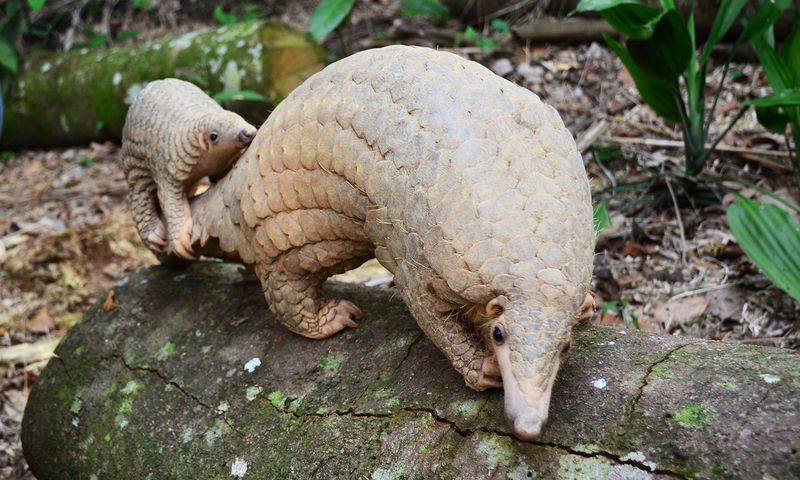 Do you wish that sometimes, you could shut out something intrusive and curl up into a ball? Guess what. Pangolins actually do that and let their tough body armor turn away predators.
Do you wish that sometimes, you could shut out something intrusive and curl up into a ball? Guess what. Pangolins actually do that and let their tough body armor turn away predators.
Unfortunately, that’s no defense against human poachers. Pangolins are believed to be the world’s most trafficked (hunted and traded) mammal – for their meat and scales. Despite rules governing their trade, authorities have seized huge volumes of illegal pangolin shipments across the years.
Last month, at the CITES (see side notes) meeting in South Africa, member countries voted to list all pangolin species under Appendix I. Appendix I lists the species that are most endangered among CITES-listed animals and plants. This move, effectively bans all commercial trade in pangolins, giving them far greater protection than ever before.
The scaly ant-eaters
Pangolins are known as scaly ant-eaters, thanks to their body armor of scales and their preferred diet of ants. The small and shy nocturnal mammals weigh between 1.6kg (3.5lbs) to 33kg (73lbs).
Curiously, males are 50% to 90% heavier than females. The claws on their feet help dig up nests and burrows of their prey, i.e. ants and termites, which they then scoop up with incredibly long and sticky tongues. In fact, their tongues can be longer than their bodies and extend outwards from a chest cavity.
Pangolin pups are carried around on their mother’s tail for 3-5 months until they can live alone. Like many other ant-eaters, pangolins have poor eyesight but compensate for it with a strong sense of smell. It was found the stress of being in captivity caused early deaths among the animals. So, not much is actually known about their life in the wild, although the loss of habitat has been a threat to their populations.
 These creatures are found in forests and grasslands across Asia and Africa and play an important role as pest controllers in the ecosystem. All 8 species of Pangolins range from "vulnerable" to "critically endangered."
These creatures are found in forests and grasslands across Asia and Africa and play an important role as pest controllers in the ecosystem. All 8 species of Pangolins range from "vulnerable" to "critically endangered."
From Africa come the Cape or ground pangolin, the tree pangolin, the giant pangolin, and the long-tailed pangolin. The Asian species include the Indian pangolin, the Chinese or Formosan pangolin, the Malayan or Sunda pangolin, and the Palawan pangolin, all of which have bristles between their scales, unlike their African cousins.
Unique self-defense system
A pangolin’s body is covered in hard overlapping scales, right from the base of its conical head all the way to its tail. These are made of keratin, the same protein that makes up our hair and nails.
In fact, the word ‘Pangolin’ comes from ‘penggulung,’ the Malay word for roller, which is the action a pangolin takes in self-defense. When threatened, a pangolin rolls itself up, tucking away its head and softer underbody. The scaly armor on the outside is impenetrable even by the large carnivores of the forest.
But human hunters can simply pick up these animals and that is what has been happening. Their scales have a huge demand in native Chinese medicines and are believed to cure a huge range of problems – from cancer to palsy.
The captured pangolins are also valuable for their meat which is considered a delicacy across South-East Asia. Last year, Indonesian police seized over 4000 dead pangolins weighing 5 tonnes, en route to China. This was the biggest ever seizure.






